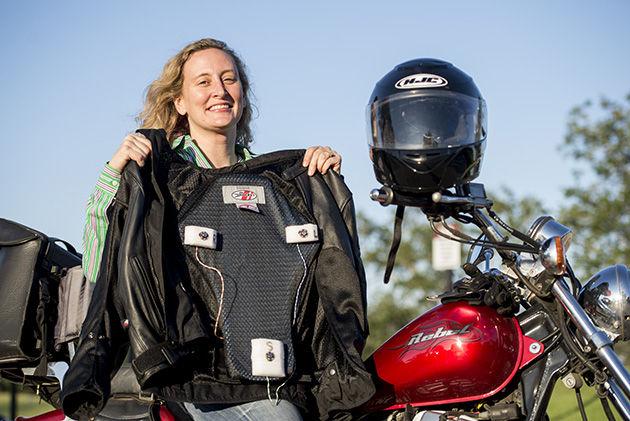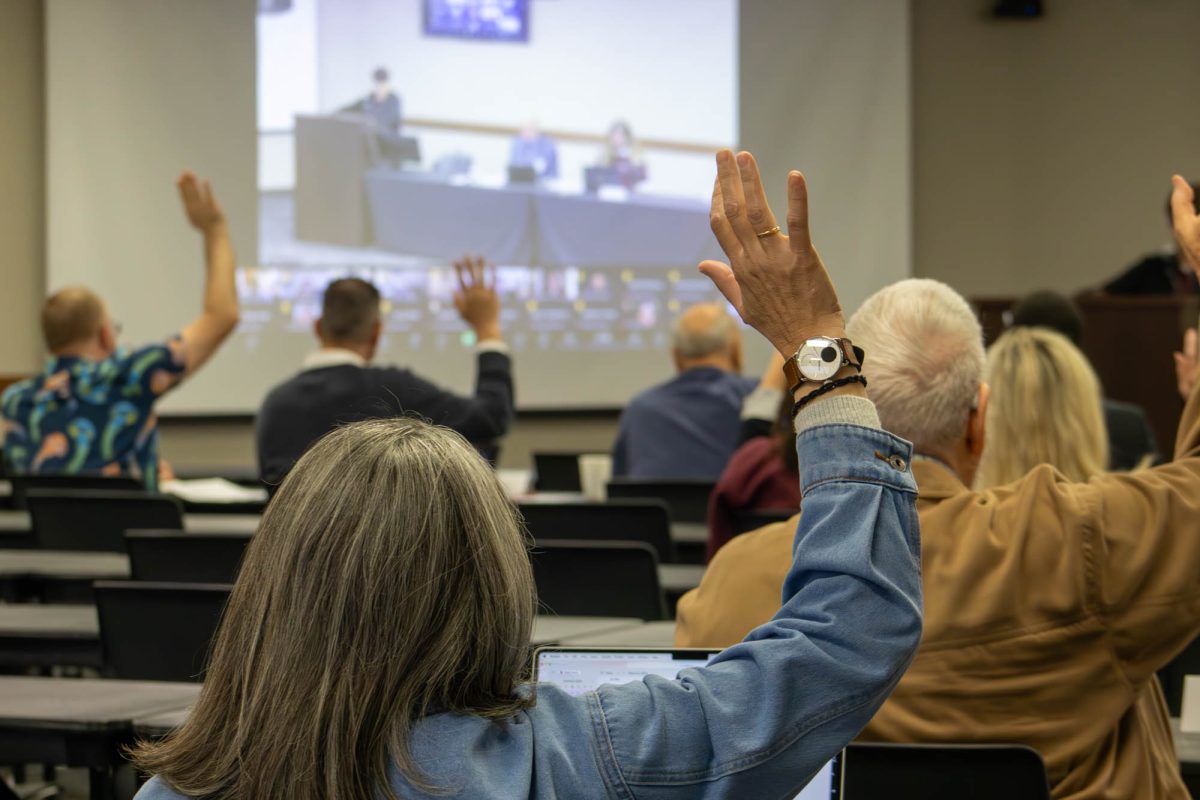From motorcycle jackets that give direction to apps that get people up and moving, a new iniative at A&M creates a research forum on campus to promote well-being.
The Coalition for Healthy Active Living, CHAL, pools research experience from across campus to address a variety of health problems. Participating researchers have backgrounds as varied as community health to computer science.
“It is a university-wide coalition with a health piece, an engineering piece, a computer science piece and a geography piece,” said Marcia Ory, health science center professor and associate dean of research in the School of Public Health.
By working together across different fields, Ory, a co-leader of CHAL, said the group’s researchers are able to do what it takes to motivate a population to get active and make a change to better their health.
“What we really want to do is understand what the factors are that improve active living,” Ory said. “Some of those factors are behavioral, like what people know they need to be more physically active and eat better diets, but we also need computer engineering people to build things like systems that make it easier to access, manage and manipulate data, and actually build devices as well.”
Tracy Hammond, associate professor of computer science and engineering, is the co-leader of CHAL. Technologies developed by Hammond’s sketch recognition lab were originally purposed for the military, but the same motion-sensing innovations used in the battlefield are helping civilians track their health progress.
One such technological advancement is a motorcycle jacket. Developed at A&M, the jacket was invented for soldiers to find their objective when jumping from a plane. Now, the jacket might help motorcyclists navigate safely — a significant safety upgrade, considering their sight-restrictive helmets.
While the jacket looks like any other, Hammond said it is made of mesh and padded fabric instead of leather. A device embedded in the back connects to the wearer’s phone via bluetooth, and the jacket communicates the necessary turn directions to the biker with several vibrating pads on each side of the back.
A vibration on the wearer’s left side means “turn left,” and vice versa. Other pads on the upper and lower back vibrate for other actions such as U-turns and low battery alerts.
Hammond said her lab seeks to use artificial intelligence to further CHAL’s aims. Artificial intelligence may help track people’s movement by using novel pattern and activity recognition algorithms. The software essentially “sees” what the subject is doing and matches the movement to potential health issues.
“We have a system that can diagnose strokes from the way that [a subject] is sketching and by doing it with a computer, we can get more information than we could get with just the naked eye,” Hammond said.
The researchers have had some success since the program’s start in September. Step Up Life, a smartphone app, is one such development. While the app is still under construction, Vijay Rajanna, doctoral student and co-developer of the app, said he believes it could have a huge impact relatively quickly.
“Many people are feeling the impact of a sedentary lifestyle,” Rajanna said. “The problem is many have a motivation to keep themselves fit and exercise, but they end up buying some fit tracking devices, and while initially their motivation is high, after a month or so they lose interest and really don’t use it.”
Step Up Life gives constant friendly reminders to its users after they have been still for an extended period of time. The user programs the amount of time between notifications and how many calories he or she wants to burn, and the app does the rest.
“We don’t force our user to follow a particular exercise pattern,” Rajanna said. “We notify them that they have been sedentary, and then the user receives an exercise to do based on how many calories they want to burn.”
The app measures the movement of the user and how many repetitions they complete through a pebble smartwatch. In addition, as part of the coalition, Rajanna is able to have reliable communication with health experts who can advise exercises and give statistics on the amount of calories each will burn.
This new, user-friendly approach to everyday fitness is just the beginning for CHAL, and Ory said many more breakthroughs will be achieved over time.
“We’re working with our colleagues in architecture to answer the question of, ‘What difference does an activity-friendly community make in being more likely to be physically active?’” Ory said. “Will that make you more likely to walk and be integrated into community life?”
Solving a problem like health motivation takes many different perspectives and ideas — a challenge that CHAL’s researchers, with their varied backgrounds, are well suited for.
“It’s really a platform where people are coming together,” Ory said. “Initially there were six, but if we begin these other projects, you’ll see many more people involved because we’re reaching out to our colleagues. So this is a platform for growth and team science.”
Tracy Hammond, associate professor of computer science and engineering, has helped develop a motorcycle jacket that gives directions without the need to look at a phone, the work of a new A&M research coalition.
Photo by Tanner Garza.
Same problems, new solutions
October 6, 2014
0
Donate to The Battalion
$2790
$5000
Contributed
Our Goal
Your donation will support the student journalists of Texas A&M University - College Station. Your contribution will allow us to purchase equipment and cover our annual website hosting costs, in addition to paying freelance staffers for their work, travel costs for coverage and more!
More to Discover









